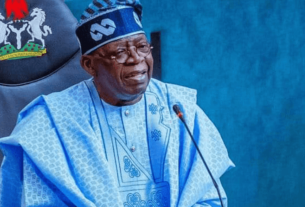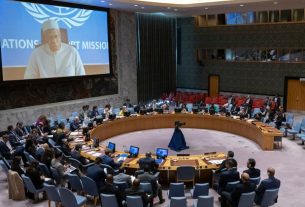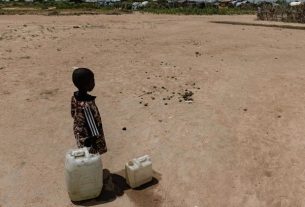Almost every piece of land on Earth belongs to a sovereign state and is strictly fenced off by borders. Try to challenge these limits and it’s a surefire way to get military forces headed your way. However, despite humanity’s obsession with drawing lines on a map, there are a small number of areas on Earth that no sovereign state claims ownership of.
These pieces of land are known as Terra Nullius – an expression that originates from Roman law and means: “Land that does not belong to anyone”. Under this category you will find Bir Tawil between Egypt and Sudan, some questionable areas on the Croatia-Serbia border, and a vast area in Antarctica. Ready to bid on them?
What is Bir Tawil?
One of the most significant examples of terra nullius is Bir Tawil, a 2,060 square kilometer trapezoidal piece of land near the border between Egypt and Sudan, which neither country claims ownership of. This land is barren, although it is often frequented by transient nomadic Bedouin tribes, such as the Ababda people.
It does not belong to any country mainly thanks to the borders established by the British Empire in the 19th and 20th centuries. According to the US State Department, Britain reached an agreement with Egypt in 1899 that stated that “the territories south of the 22nd parallel” belonged to Sudan, placing Bir Tawil under Sudanese control.
In 1902, the British prepared another plan for the Sudan-Egypt border. As part of this plan, Bir Tawil was transferred to Egyptian administration because the area was occasionally used by the Ababda tribe, which was based near Aswan in southern Egypt.
While Egypt wants to stay within the original 1899 border, Sudan stands by its demand to recognize the administrative border of 1902. In other words, Egypt believes Bir Tawil is in Sudan, but Sudan believes it is in Egypt. In practice, Egypt controls the place, even though it removed it from its official maps.
Several groups have tried over the years to claim ownership of the land, but none of them have been internationally recognized. In 2014, US resident Jeremiah Heaton of Virginia tried to take ownership of the region, calling it the “Kingdom of North Sudan” and declaring himself king. His motivation was so he could grant his 6-year-old daughter Emily’s wish to be a princess. Not surprisingly, his claim was not recognized by the UN and no country recognized the independence of the region.
Another less ludicrous idea is that Bir Tawil could serve as an example of a new type of jurisdiction where the natives own the rights to the land. But for now – Bir Tawil does not belong to anyone.
Mary Byrd Land
In the eyes of international law, no part of Antarctica is owned by any one country. However, this has not stopped seven countries from claiming parts of the continent as their own: Argentina, Australia, Chile, France, New Zealand, Norway, and the United Kingdom.
The typical map showing these territorial claims would show Antarctica sliced up like a pizza, with Australia and Norway taking the lion’s share. However, it is worth noting that one corner has not been claimed by any country and is known as Mary Byrd Land.
The area is named after the wife of US Navy officer Richard E. Byrd, who explored the area in the early 20th century. Covering 1,605,792 square kilometers, Marie Bird is the largest unclaimed territory in the world. This is simply because it is isolated and impassable, even by Antarctic standards.
In 1939, the president of the United States, Franklin Delano Roosevelt, ordered the members of the United States Antarctic Service Mission to take steps to claim sovereignty over various areas in Antarctica as the territories of the United States.
Despite these attempts, these measures were not recognized as official in 1959, when the Antarctic Treaty system was established (which states that there is no sovereignty in Antarctica). Nevertheless, the United States Department of Defense sometimes claims the sovereignty of the United States in Antarctica, following the country’s research activities there prior to 1959.
Despite the United States’ claims to sovereignty in Mary Byrd Land (east of 150° west longitude), the part west of 150° west is part of the Ross Protectorate over which sovereignty is claimed by New Zealand. In any case as of 2023 – no existing country has sovereignty over Mary Byrd Land.
Unclaimed land between Croatia and Serbia
Between the Balkan border of Croatia and Serbia, on the east bank of the Danube River, there are several parcels of land that have been hotly contested since the bloody breakup of Yugoslavia in the 1990s.
On the west bank of the river there is the opposite problem: about four pieces of land that are not claimed by either country. Gornja Siga is the largest of these areas and comprises only 7 square kilometers of forested land that acts as a floodplain for the Danube. It is technically under Croatian control, although they state that the land is Serbian, while Serbia does not claim ownership of the land.
Although neglected by Croatia and Serbia, several other parties were very interested in the idea of making Gornja Siga their own. In April 2015, a small group of libertarians led by Czech politician Vit Jedlička planted a flag on the uninhabited swamp and declared it a new micro-state called Liberland or the Free Republic of Liberland. The idea was to turn it into a libertarian utopia with no mandatory taxes, minimal state regulations, and Bitcoin as currency.
“Liberland’s motto is ‘live and let live’ as it prides itself on personal and economic freedom for its people. This includes limited powers given to the government to ensure less interference in the freedom of the people and the nation as a whole,” says the Liberland website, where you can even apply for citizenship.
The goal of the founders is to allow honest people to prosper without the oppression of governments that impose restrictions and unnecessary taxes. The founders plan to publish a constitution and a set of laws, as well as establish a government that will include 10-20 members who will be elected democratically using electronic voting, as well as implement elements of direct democracy. In addition, there is a plan to launch a decentralized currency such as Bitcoin.
Unfortunately, this utopian dream has encountered several obstacles. Despite having shown little interest in Gornja Siga in the past, the Croatian authorities were not keen on the idea of a wild libertarian micro-state on their doorstep, so their police force has been arresting anyone trying to set foot on the land ever since and effectively preventing settlement there.
Several micro-states have expressed support for the idea of Liberland, including an enclave kingdom that claims ownership of an additional piece of land from the disputed region north of Liberland. Another supporter of Liberland is the Principality of Sealand – a unique sea fortress that sits about 12 km east of Suffolk in the North Sea, yet despite its proximity to Britain – it claims to be its own nation even though visiting it is prohibited.
The last supporter of Liberia is the Kingdom of North Sudan – the same “kingdom” declared by the father who wanted to make his daughter a princess and declared ownership of Bir Tawil.



